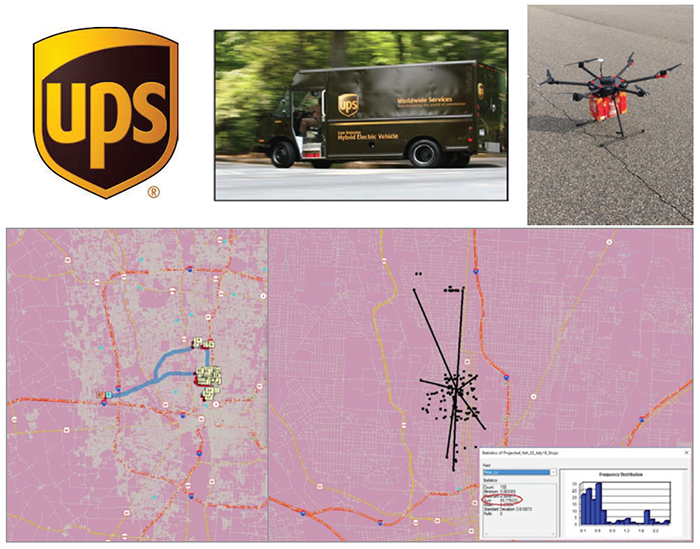United States - European Commission Urban Freight Twinning Initiative: Compendium of Project Summaries, Volume II
Overview of 2018-2019 International Urban Freight Roundtables
| Research | United States |
Optimization of Intra-City Freight Movement with New Delivery Methods
The purpose of this study is to develop a methodology for modeling intra-city freight delivery tours using innovative modes and alternative last mile delivery scenarios to determine potential energy savings in Columbus, Ohio. This study is part of the Department of Energy (DOE)'s SMART (Systems and Modeling for Accelerated Research in Transportation) Mobility Multi-Modal Freight Pillar. It is a partnership with the Oak Ridge National Laboratory, Idaho National Laboratory, National Renewable Energy Laboratory, United Parcel Service—Columbus, Ohio, and the Mid-Ohio Regional Planning Commission.

Source: Oak Ridge National Laboratory.
Project Type
Research.
Period of Performance
May 2017 - May 2018.
Project Site
Columbus, Ohio, USA.
Contact
Amy M. Moore
Transportation Planning Engineer, Research and Development Staff
Oak Ridge National Laboratory
Knoxville, Tennessee
MooreAM@ornl.gov
(404) 625-4661
Topics Addressed
- Curbside delivery.
- Energy consumption.
- Last mile delivery.
- Logistics/distribution.
- Mobility/congestion.
- Modeling.
Expected Outcomes
Initial findings from the study suggest that fully electric vehicle (EV) Class 6 delivery trucks appear to be helpful in reducing energy usage in the portion of the tour from the depot to the neighborhood ("stem" portion). This also suggests significant savings for vehicles traveling further from a depot before arriving at destinations. Parcel lockers were also found to be helpful in reducing energy usage in suburban neighborhoods and areas with fewer through-streets and more cul-de-sacs (less connectivity). Lastly, the findings suggest that pairing parcel lockers with EV Class 6 delivery trucks or EV vans will likely further reduce overall freight delivery energy use.
Stakeholder Involvement
This study was funded by the DOE and was a joint effort with the Oak Ridge National Laboratory (lead), Idaho National Laboratory, and the National Renewable Energy Laboratory. The United Parcel Service in Columbus, Ohio, and the Mid-Ohio Regional Planning Commission provided data for the study.